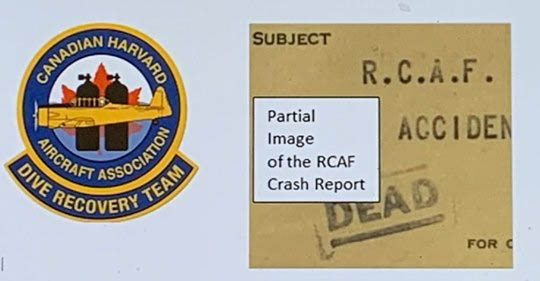Over 65 years ago, a little-known Canadian serviceman gave his life in the service of his country when his plane crashed in Lake Ontario during training exercises. This incident has been lost in the march of time to most, but it will not be forgotten by the Canadian Harvard Aircraft Association (CHAA) Dive Recovery Team (DRT). We wish to honour his sacrifice by locating his aircraft and returning his remains to his family and his aircraft to a Canadian museum. Our goal for this campaign is to raise sufficient funds to cover fuel costs, vessel charters and local expenses for the search and recovery which, depending on weather and official follow-on approvals, may extend into 2021. The projected costs to achieve our objectives are $12,000. Any excess funds will be used by CHAA to continue its mission to preserve our aviation history.
READ the Original Story on The Scuba News Canada
Update August 2020
Bowing to understandable queries, the Canadian Harvard Aircraft Association (CHAA) Dive Recovery Team (DRT) have decided to release details on the above mentioned crash and the missing airman.
Location – Near RCAF Trenton. November 7th, 1952
Flying Officer Barry Newman was conducting a high-altitude test in P-51 Mustang #9555.

Three sets of observers at three different locations witnessed the aircraft go into a high-speed vertical dive. At about 2,000 feet it appeared Newman regained some control and abruptly pulled out of the dive. The plane then flipped over and veered right, then lost its starboard wing. Now doomed, it plunged violently into the water, disintegrating just before and on impact. Newman had no time to bail out.
The rescue boat moved in quickly and recovered the wing, an oxygen tank and some smaller fragments. Grappling later brought up the prop but nothing more. FO Newman’s remains, the fuselage and engine were never found. The Board of Inquiry determined that the probable cause was pilot anoxia due to a mechanical failure of the oxygen system at 20,000 feet.
Our immediate mission is to locate the debris field with the high resolution 450 kHz CHIRP enhanced side scan sonar. The fuselage and engine are expected to show up on the acoustic images. Once a target has been identified we will then deploy a remotely operated vehicle equipped with a video camera to survey the site to make a positive ID and document all visible parts for recovery planning purposes. With luck on our side our second phase of the operation will include divers conducting further non-contact searching and then recovery smaller items. Larger items will be brought to the surface using airbags and winches. In this phase we also hope to bring up personal items worn by FO Newman.
We are in the process of trying to locate Flight Officer Newman’s relatives. At his death his parents, Frederic and Bernice Newman lived in Grimsby, Ontario with his siblings Eugene and Patricia.
DONATE to Help This Cause
Information Provided by GOFUNDME






